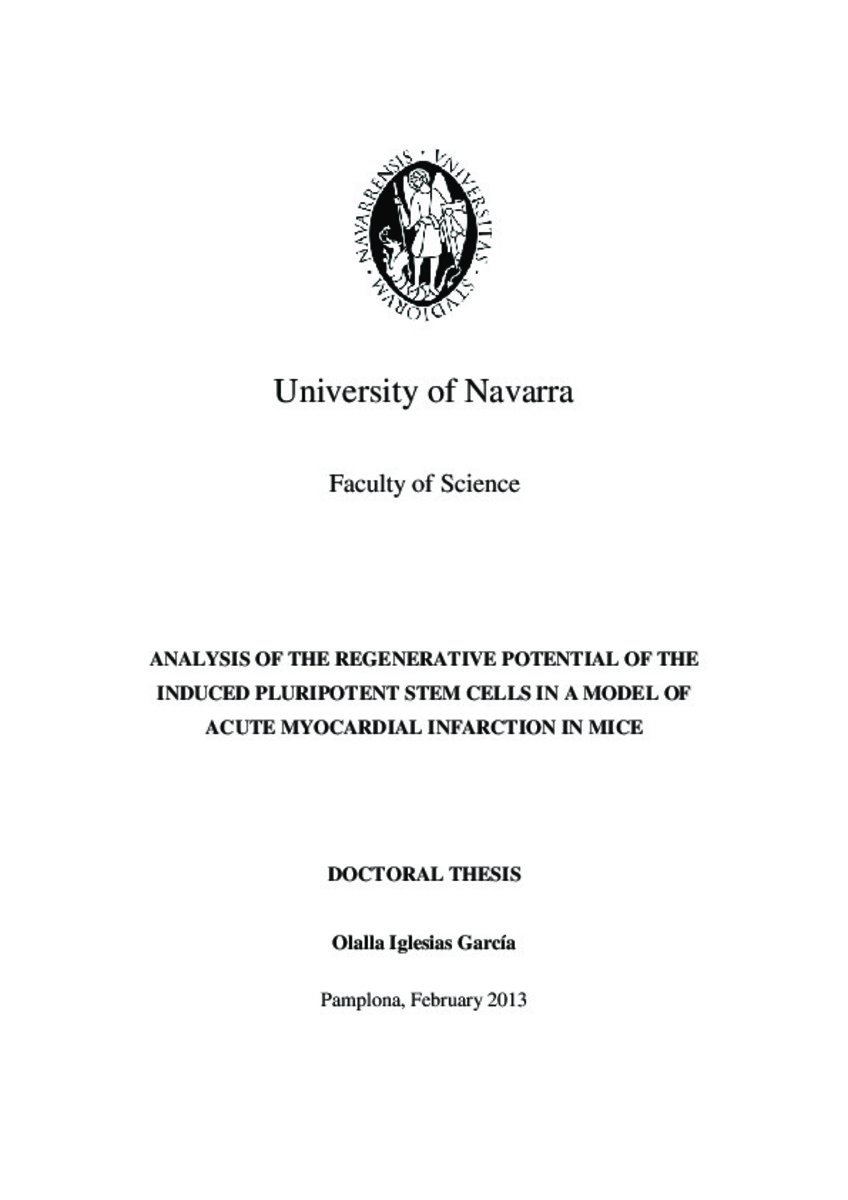Analysis of the regenerative potential of the induced pluripotent stem cells in a model of acute myocardial infarction in mice
Keywords:
Biología celular
Biología molecular
Cultivo celular
Materias Investigacion::Ciencias de la Vida
Defense Date:
20-May-2013
Publisher:
Servicio de Publicaciones. Universidad de Navarra.
Citation:
IGLESIAS GARCÍA, Olalla. “Analysis of the regenerative potential of the induced pluripotent stem cells in a model of acute myocardial infarction in mice”. Prósper Cardoso, Felipe (dir.), Pelacho Samper, Beatriz (co-dir.). Tesis doctoral. Universidad de Navarra, Pamplona, 2015
Statistics and impact
0 citas en

0 citas en

Items in Dadun are protected by copyright, with all rights reserved, unless otherwise indicated.







